Falling Snow Causes Treacherous Conditions on Croatian Roads
January 25, 2021 – Released images show falling snow is causing extremely difficult conditions on some Croatian roads, both motorways and state roads, with the mountainous regions of Lika and Gorski Kotar most affected
Any optimists living in Zagreb could be forgiven for thinking winter was over. Over a succession of two days last week they were basking in the relatively balmy daytime temperatures of 16 degrees. The sun shone brightly, the boots stayed indoors and lighter jackets were thrown on to visit the shops. Not everyone in Zagreb is an optimist, though. And those with an experience that is greater than their hope knew the reality of the situation; Croatia's winter can turn round at any moment to bite you in the ass.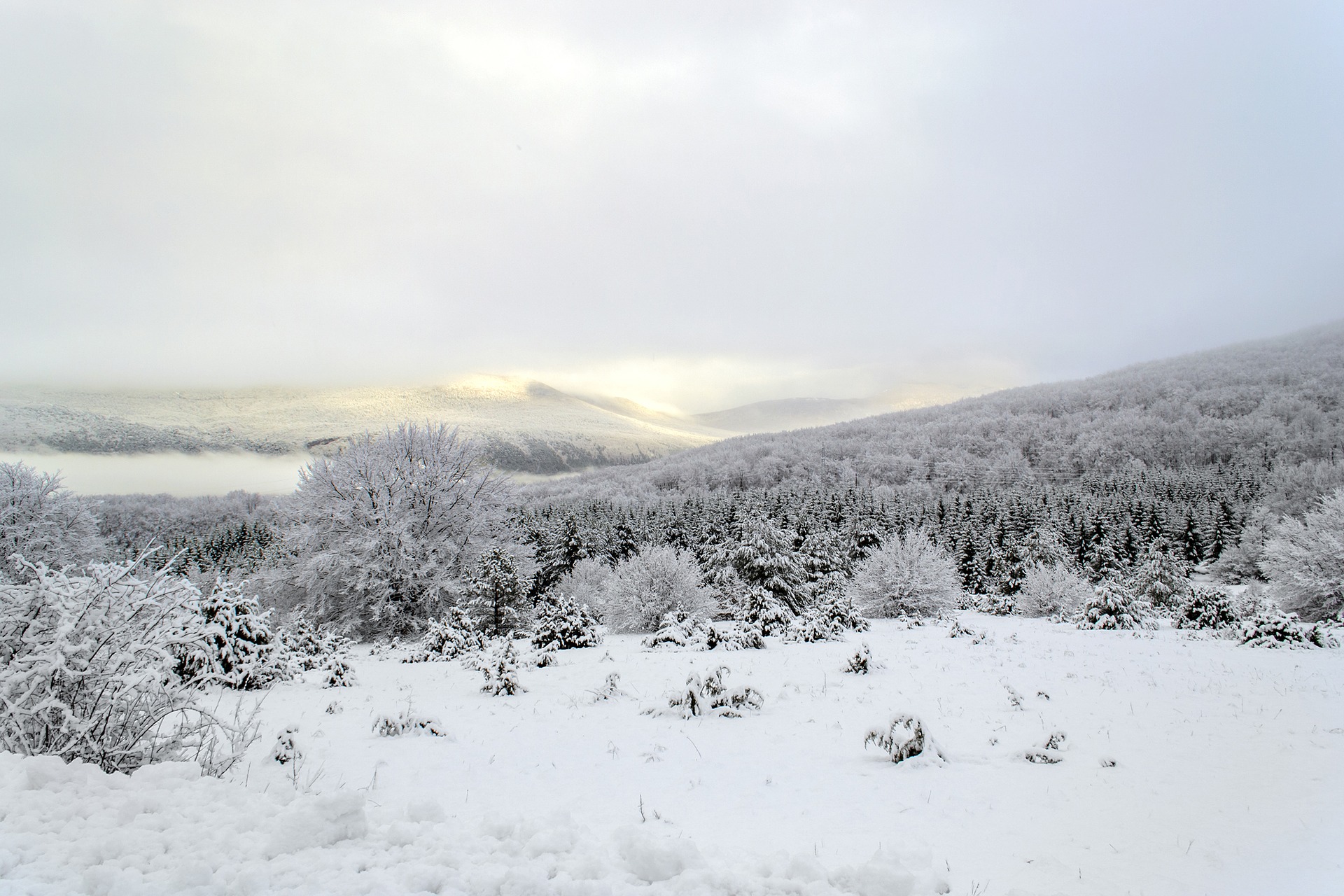 Snow covering the Lika region
Snow covering the Lika region
And that's exactly what happened this weekend, when falling snow produced treacherous driving conditions across a wide area of Croatia. On some motorways, a ban on trucks with trailers and tractors with semi-trailers is in place because of the continually falling snow. Another response to the falling snow has been to make winter vehicle equipment mandatory.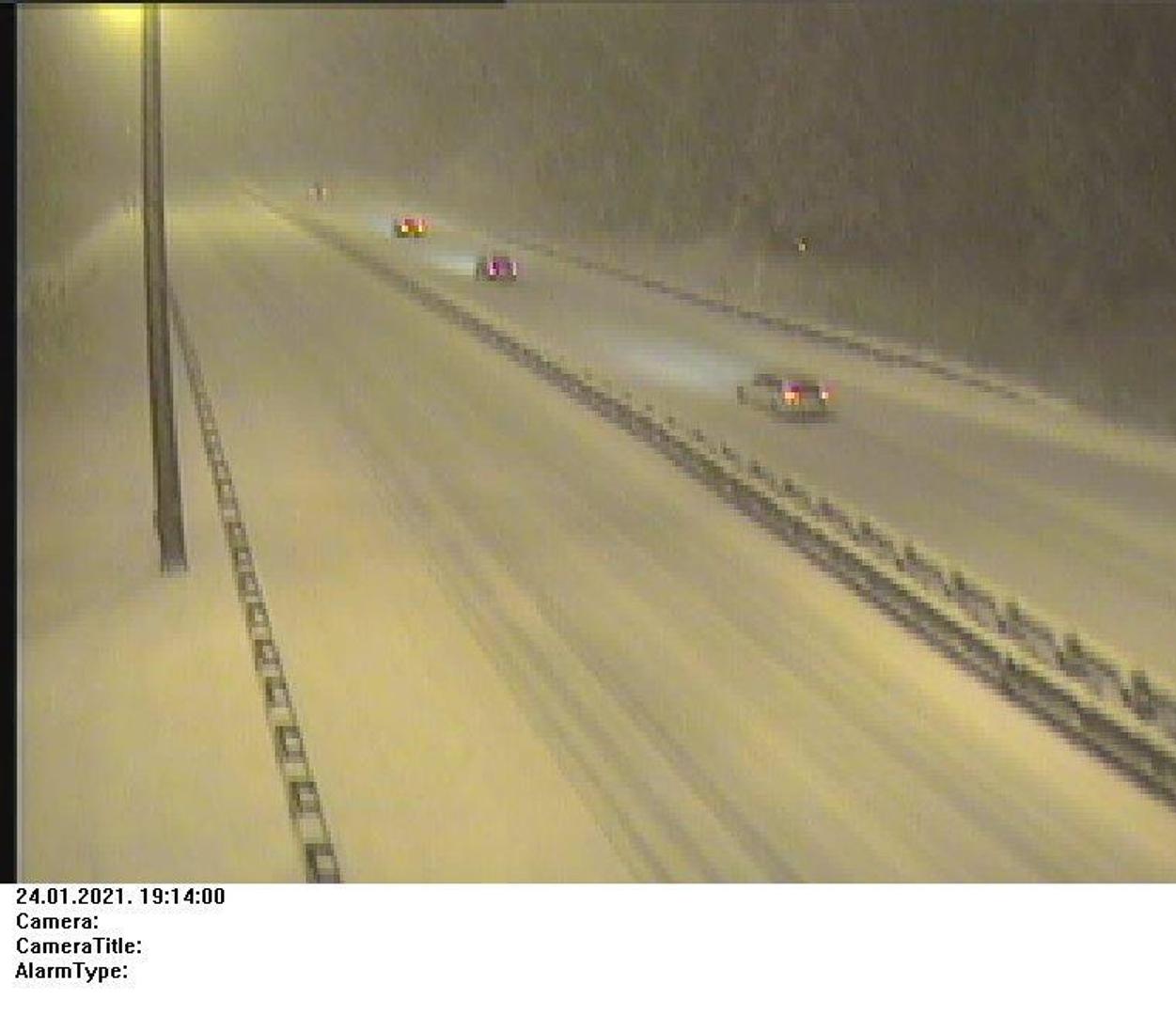 A thick layer of snow covers the road near Delnice at 19.14 on Sunday 24 January 2021 © HAK
A thick layer of snow covers the road near Delnice at 19.14 on Sunday 24 January 2021 © HAK
While the Croatian capital was experiencing its warm spell, falling snow continued to descend on more mountainous regions of the country, Lika and Gorski Kotar in particular. And it is those that remain most affected by the treacherous driving conditions. Hrvatske Autoceste (Croatian Motorways) are responding to the continuing weather conditions. But, they released pictures of one motorway section near Delnice which, even after plowing, was 30 minutes later again covered by the falling snow.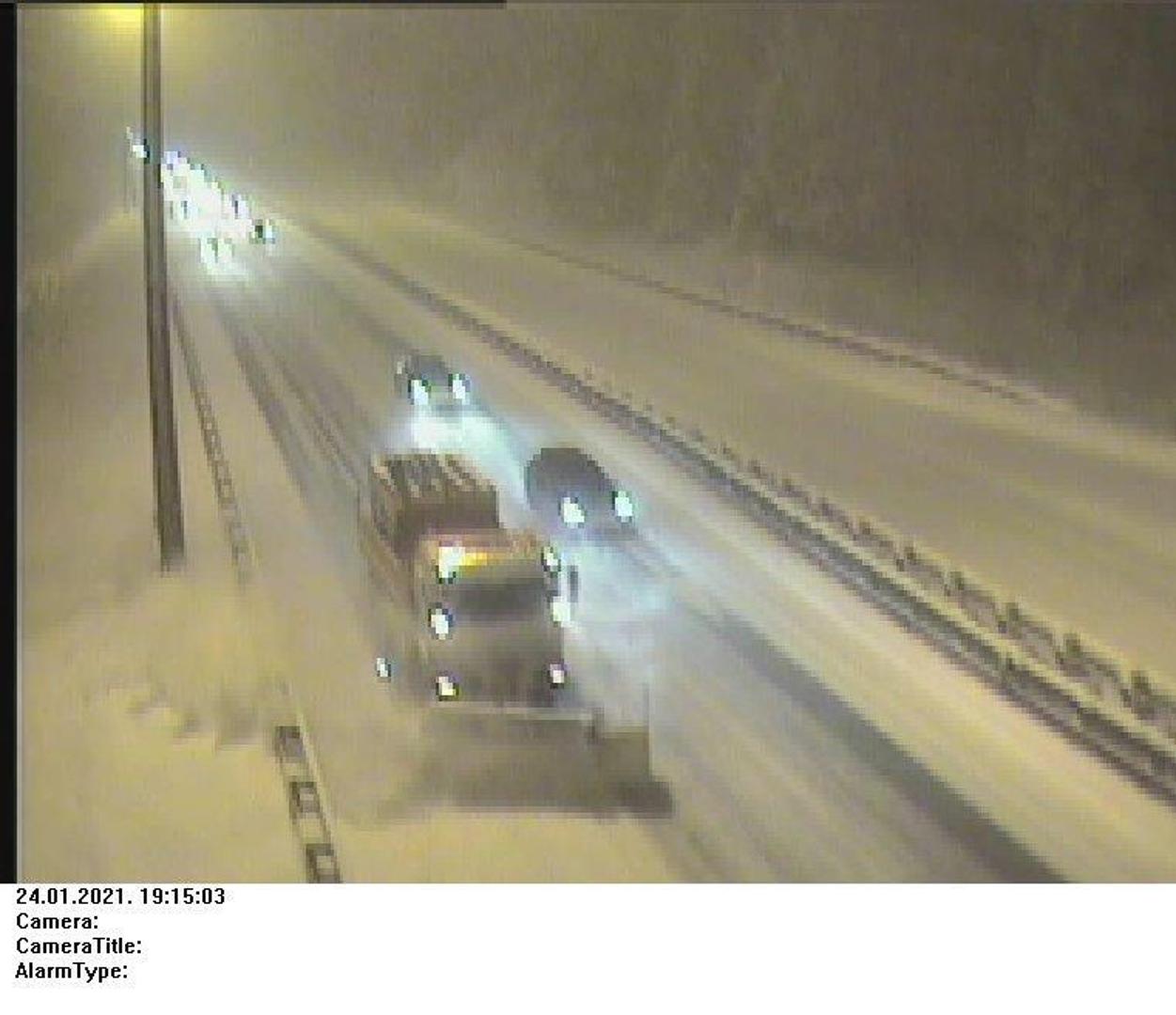 A snowplow arrives at 19.15 to clear the snow © HAK
A snowplow arrives at 19.15 to clear the snow © HAK
Thick falling snow and ice made it difficult to drive on the A6 Zagreb - Rijeka highway. The National Association of Drivers and Vehicle Owners (HAK) issued a series of warnings for the following routes: A1 Zagreb-Split-Ploče between the junctions of Bosiljevo II and Maslenica, A6 Rijeka-Zagreb between the junctions of Bosiljevo II and Kikovica, state road DC1 between Zagorje and Gračac and state road DC3 through Gorski Kotar between Zdihovo and Kikovica. By 19.45 the road is in the same state as before the snowplow arrived, because of continually falling snow © HAK
By 19.45 the road is in the same state as before the snowplow arrived, because of continually falling snow © HAK
HAK also reported that there is currently no passable road for trucks with trailers and tractors with semi-trailers from the direction of the continental interior towards Rijeka and Istria and Dalmatia and vice versa. The colder temperatures are expected to stick around for most of the early part of the week, although the skies may be clearer in some regions. Temperatures will rise again heading towards next weekend under an increasing cloud cover, but the chilly conditions might well bounce back towards the end of next weekend. Zagreb itself could even experience more snowfall at that time.
Minister Says Istrian Y Motorway to Be Completed to Ucka Tunnel by 2021
ZAGREB, Aug 8, 2020 - Transport Minister Oleg Butkovic has said that the extension of the Istrian Y motorway concession agreement between Croatia and the company Bina-Istra until 2039 envisages €197 million worth of investments and that the motorway is expected to be completed to the Ucka tunnel by 2021.
The second tube to the Ucka tunnel and the full profile of the motorway should be completed by 2024, the minister said.
The concession agreement will be prolonged until 2039 even though we believe that the loans will be repaid somewhat sooner and the investment will be repaid by 2037, after which Croatia will become the owner of the motorway, Butkovic said.
This is the continuation of construction and investments in big infrastructure projects, notably transport, Butkovic said, stressing that currently around 25 billion kuna worth of investments, mostly financed with EU funds, was underway.
The European Commission on Friday approved, under EU State aid rules, Croatia's plan to prolong the Istrian Y motorway concession agreement with the company Bina-Istra. This will allow €197 million of new investments by the concession operator to go ahead while limiting distortions of competition, the EC said.
The EC said that the motorway is a 145 km long motorway linking the Istrian region with the rest of Croatia. The motorway is operated under a concession agreement from 1995, which was awarded to Bina-Istra until 2034.
The prolongation will allow Bina-Istra to finance the construction of a second carriageway (one more lane in each direction) between Vranja Interchange and the Ucka tunnel/Kvarner portal - an 8km stretch on the north-eastern side of the motorway.
Outsider's View: Why Can't Croatian Motorways Be Free?
July 30, 2020 - Marc Rowlands asks the questions all outsiders want answers to. This time it's why can't Croatian Motorways be free?
Should we take the old road or the new motorway? The question is pondered by both residents and visitors. The answer is often dictated by time and cost.
Sure, if you've got all the time in the world (and/or want to save money), Croatia's longstanding road network wends its way through some spectacular countryside. You get a much better feel for the country and its incredible topography and geography by taking in the view more slowly.
But, there's always the chance you might get stuck in a tailback in the sweltering heat, with frustrated kids fighting on the back seat. Almost as bad, you could get caught behind an ancient small-to-medium goods delivery van or a local bus, with absolutely no chance to overtake on the narrow, winding stretch for 50 kilometres. “Vozi Miško!”
If you're travelling for business or bolting to the coast for a weekend or family holiday, speed is your primary concern, and the motorways the best choice. And, luckily, you have a dependable and highly modern motorway network that will get you there safely and in good time. But, you gotta pay.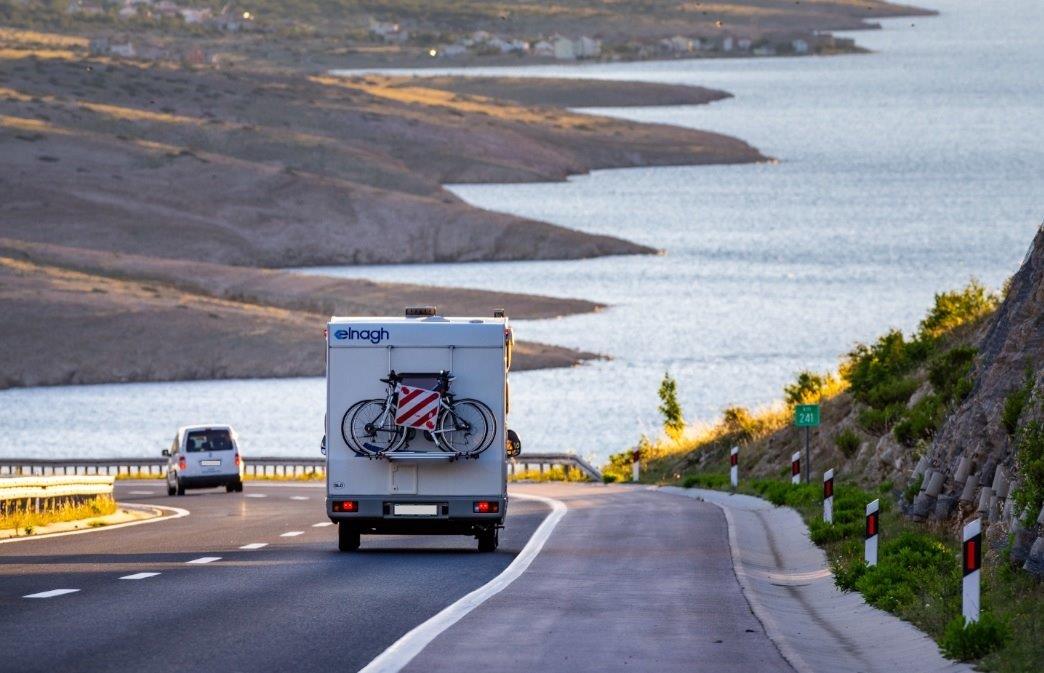
Croatian Motorways © Hrvatske Autoceste
“We built 90% of our motorways between 20 and 30 years ago,” Alan Bahorić tells TCN when we sat down with the folks of Hrvatske Autoceste (Croatian Motorways) to ask our questions. “I'm afraid we must pay for them over the next 15 years.”
“15 years? Great! So, after that, they will be free?”
“The motorways will not be entirely free, but they will be repaid.”
Hrvatske Autoceste is the company with responsibility for building, maintaining, and paying for most of the motorways in Croatia. Other companies run some of the motorway stretches, but Hrvatske Autoceste is the big one. Their owner is the Republic of Croatia.
30 years ago, Croatia had less than 300 km of motorways. Today, it has 1.306,53 km. Recognising that its transport system was severely dilapidated, the relatively new Republic of Croatia had a tough choice to make; update the motorways or the rail network? They chose the former and, not yet eligible for EU funds to assist, borrowed the money needed to undertake the mammoth task. This saddled the country with significant debt. Yikes! So, they formed Hrvatske Autoceste to manage the Croatian Motorways, the toll booths creating a fair system by which the debt could be repaid; the people who use the motorways pay for them, not the taxpayer. Bravo!
The tolls on Croatian Motorways may seem expensive to regular domestic users, but in fact, they are average to or below average in comparison to those all across Europe. The debt undertaken ensured Croatia caught up fast with the rest of Europe. Consider Germany, where the modern motorway system was begun the best part of a century ago.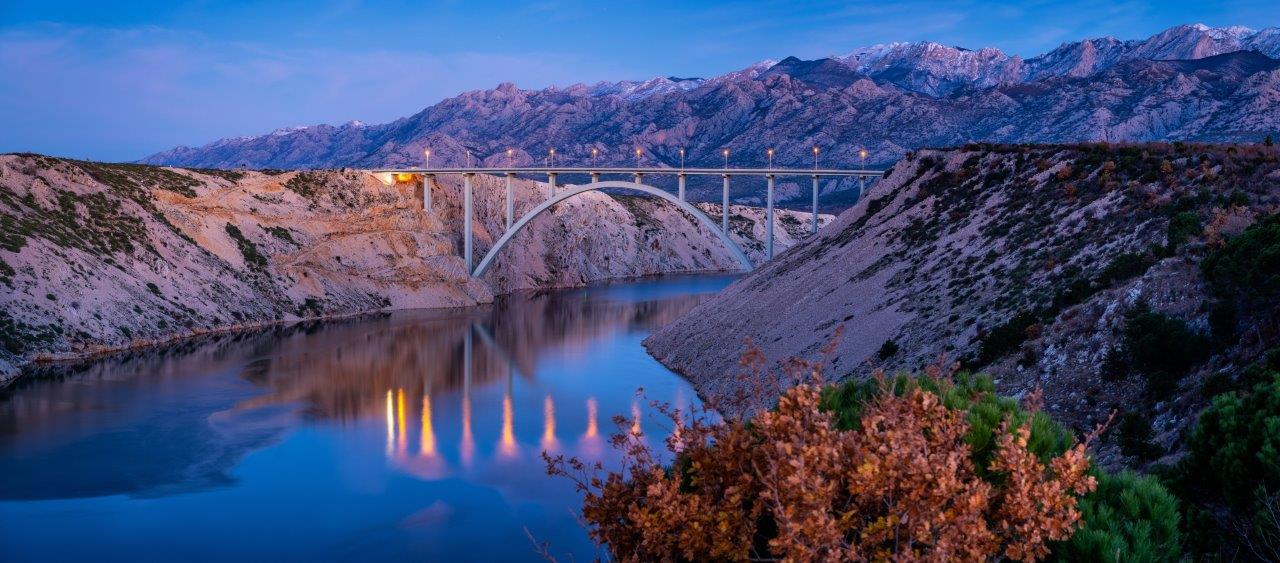
Croatian Motorways © Hrvatske Autoceste
Croatian Motorways are also renowned for their safety. In comparison, consider Italy. They privatised much of their modern infrastructure and built almost everything in their economic boom between the mid-1950s and mid-1960s. Bridges, roads, buildings, and schools were built, often with cheap and substandard material to increase profits. Works and ownership in some cases allegedly ended up in the hands of the mafia. When the Morandi Bridge in Genoa collapsed in 2018, tragically killing 39 people, it was the 12th bridge to have collapsed in Italy since 2004. It is unthinkable that this could have happened a single time in famously safe Croatia. The knock-on effect for tourism would be catastrophic.
By the time the debt for the motorway construction is repaid, as much money again will have been invested in the system. Much of this investment goes on maintenance costs, completion of the Croatian Motorways network, and integrating Croatia into Europe's biggest motorway projects. Constantly updating, the network now caters – via 34 locations – for electric car use. Prior to 2019, in the country that so proudly claims inventor Nikola Tesla, you could not have toured it in a Tesla electric car. Now you can.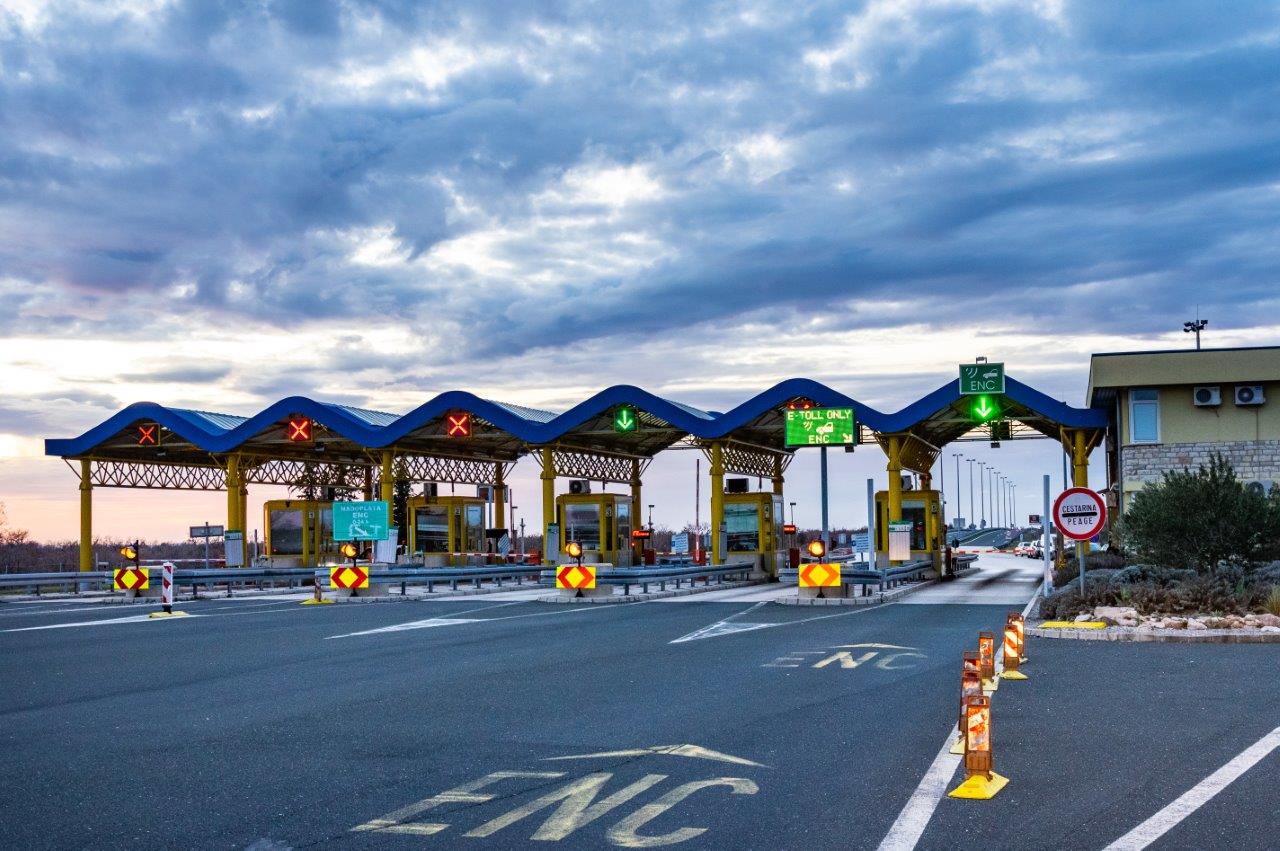
Croatian Motorways © Hrvatske Autoceste
To have completed 80-90% of your network in around three decades is no mean feat. The largest projects remaining are the completion of the route which integrates the Pelješac Bridge - a motorway stretch from Metković to Dubrovnik – and the Croatian segment of the European corridor connecting North Europe to the Adriatic. Starting in Budapest, it necessitates the building of a bridge near Beli Manastir. Thereafter the motorway will pass by Osijek, connect to the Zagreb-Slavonia motorway near Lipovac, then pass through Bosnia and its capital Sarajevo and on to Ploče.
But, back to the original question; why can't Croatian Motorways be free?
“Well, tell me somewhere in Europe where they are free?” counters Bahorić.
He has a point (although in the UK, where some of the TCN team are from, almost every motorway is free). But, the question is really prompted by the advent of COVID-19. Couldn't motorway tolls be removed in 2020 and 2021 in order to stimulate domestic and regional tourism? Could the debt be offset and paid off over an extra couple of years? The folks at Hrvatske Autoceste patiently take the naïve suggestion. It negates to consider the freight traffic using the motorways nor the seasonality of motorway use. It wouldn't help the areas most affected by a drop in footfall – southern Dalmatia and Dubrovnik, which are largely charter destinations. Also, it would be a government decision. The 10% rise of toll in high season has already been abolished this year in order to help in this very way.
However, there is one incredible way that Hrvatske Autoceste can stimulate tourism.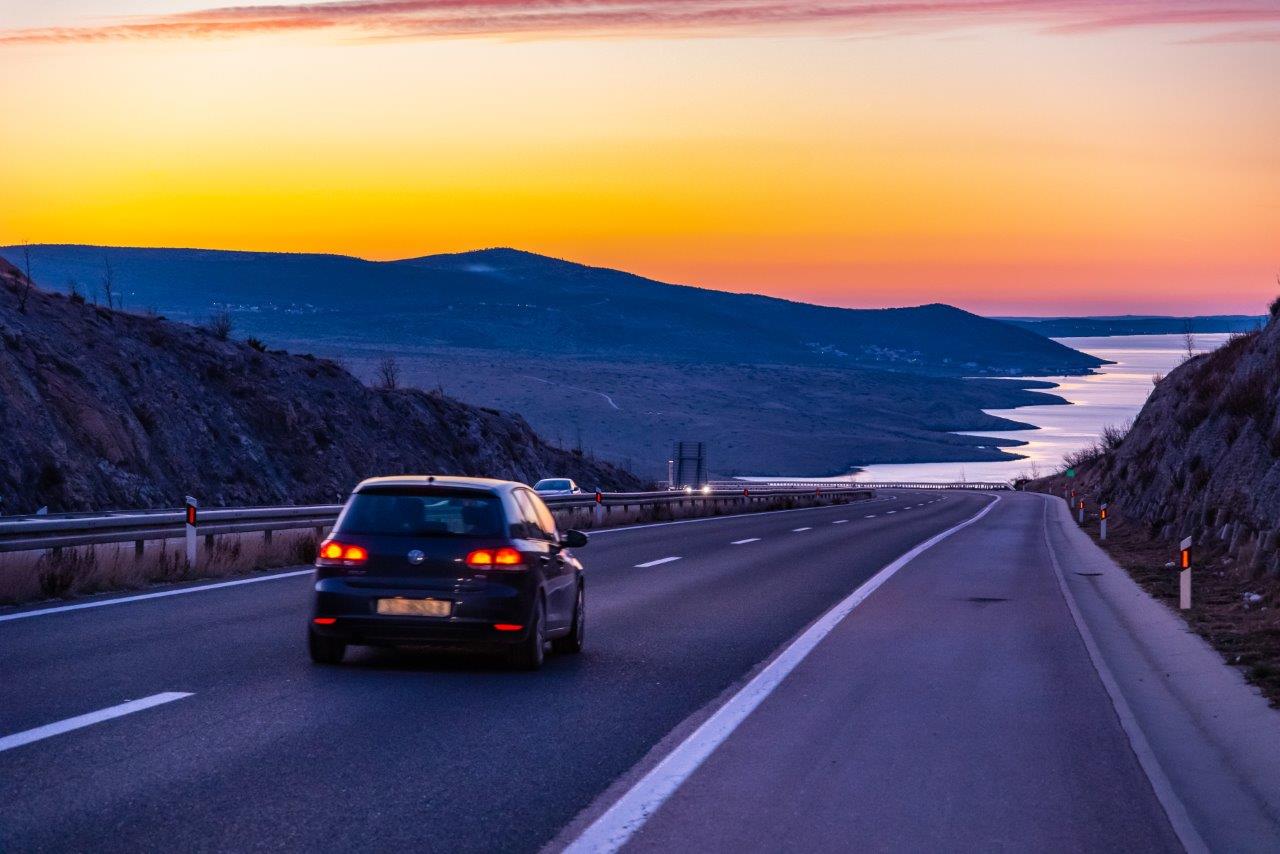
Croatian Motorways © Hrvatske Autoceste
"In a few years, Croatia will get a new electronic toll collection system,” Hrvatske Autoceste told TCN. “This will significantly increase throughput and reduce harmful emissions caused by congestion because while manual toll collection has a capacity of about 200 vehicles per hour, the new system allows the passage of up to 3,000 vehicles. The new system will be based on a combination of two modern and proven technologies: billing via an enhanced version of the ENC in-vehicle (DSRC) and an automatic license plate reading system (ALPR), which are proven technologies used in the EU. The system will enable simpler and faster price formation, for example, higher prices at the time of the highest congestion and lower prices in periods of less dense traffic. In accordance with the trends in the EU and the pricing policy, electric and hybrid vehicles will be favoured, but also polluters, ie vehicles with high emissions of harmful substances will be sanctioned. As we have implemented before, frequent users will be able to get discounts via ENC devices. In addition to flexible tariffs, the new system will implement loyalty programs for frequent users and other marketing activities such as partner-service programs.”
Well then, there's your answer. Croatian motorways can't be free, not even to stimulate tourism at the time of COVID-19. But, if some joined-up thinking and co-operation were to take place, discounts for National Parks or accommodation could feature as a future stimulus to Croatian tourism. Imagine Slavonija reaping the benefits of the huge motorway about to pass through it by slashing accommodation prices by exchanging vouchers obtained by paying the motorway toll? That sounds like Croatia 2.0 to us.
Slavonia to Dalmatia in Under 4 Hours: The A1 Motorway
The Autoput A1, a motorway which will run through Bosnia and Hercegovina, is currently under construction. It will span 334 km when completed and will be the fastest route between Slavonia and Dalmatia.
Why is the A1 important for Croatia, Slavonia and Dalmatia?
According to Google Maps, it currently takes roughly the same amount of time (7 hours) to drive from Osijek (in Slavonia) to Ploče (in Dalmatia), either by staying within Croatian borders or crossing through Bosnia. The Croatian route is a 784 km drive, while current routes through Bosnia are up to 200 km less. Nevertheless, the drive through Croatia remains on four-lane motorways, which are built for speeds of up to 130 km, while the two routes through Bosnia mostly involve two-lane roads where speed limits vary, but are capped at 80 km.
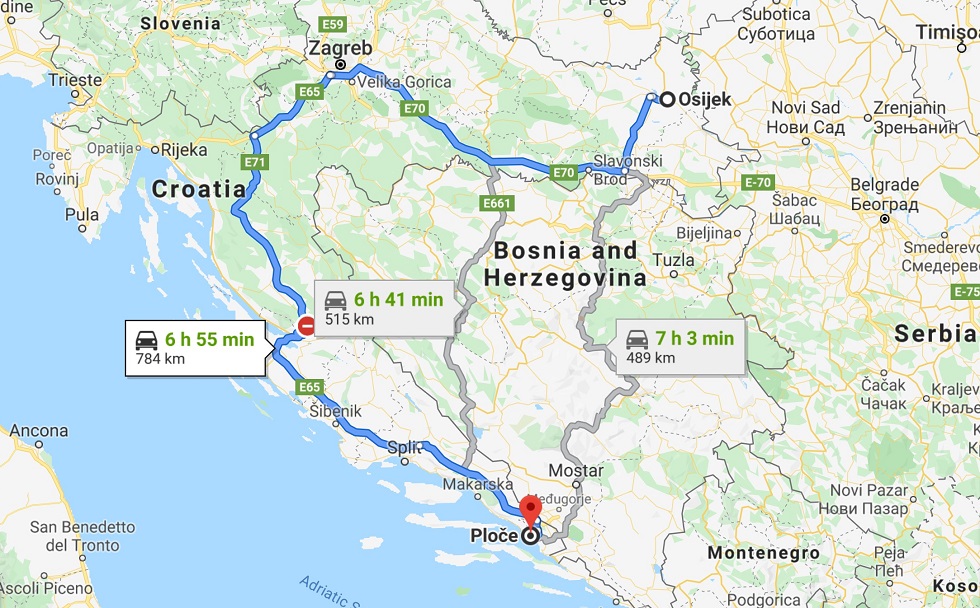
The Autoput A1, which will span Eastern Bosnia, will be an estimated 334 km in length. It is approximately 72 km from Osijek to the Bosnian border, and about 24 km from the Bosnian border to Ploče. Once the A1 is complete, it will be a about a 430 km drive from Osijek to Ploče, which is 354 km less than the current Croatian route and will take less than 4 hours!
The route also provides a faster connection from the rich agricultural region of Slavonia to the Port of Ploče, a key Adriatic port in Southern Dalmatia.
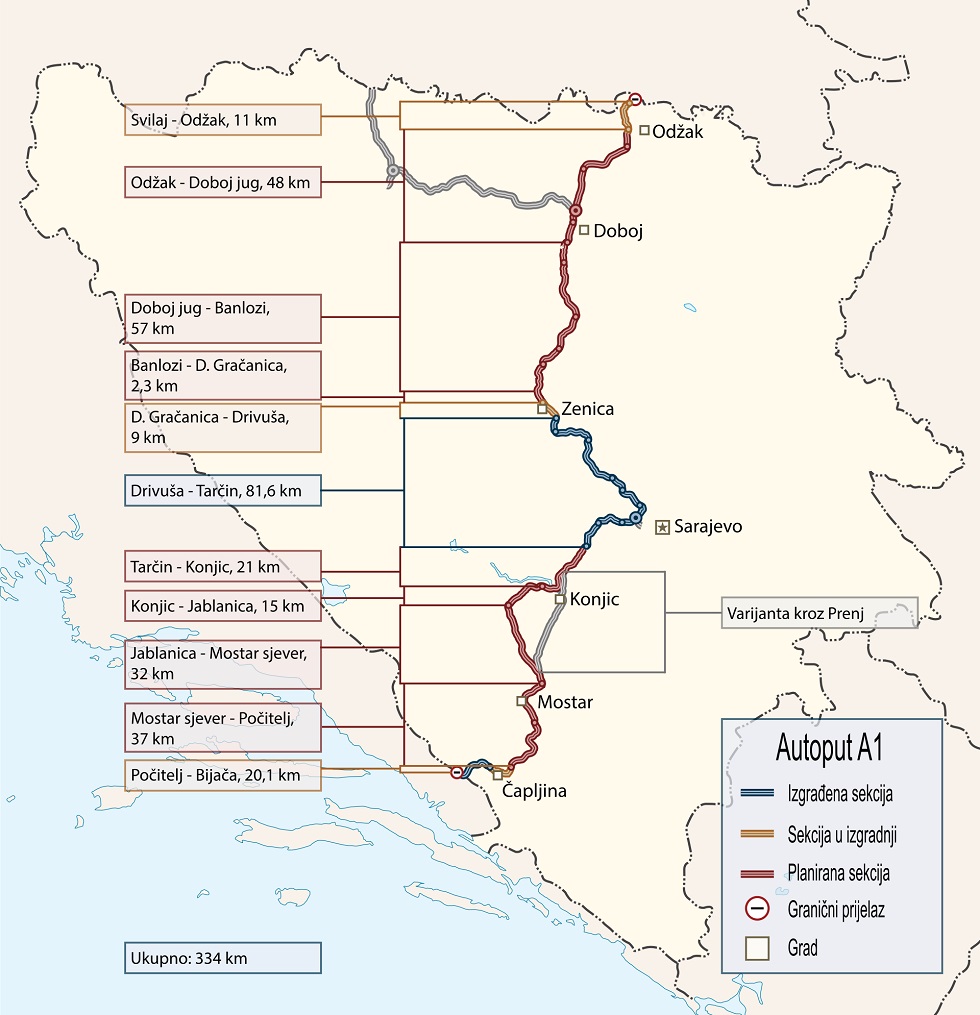
Why is the A1 important for Bosnia and the entire region?
As well as providing a connection to the Port of Ploče, the A1 will connect four major Bosnian cities: Doboj, Zenica, Sarajevo and Mostar. It also connects Međugorje, Kravice and Počitelj; all of which are world-class tourist destinations.
The A1 is part of European Route E73/Corridor Vc, which will connect the above-mentioned towns and cities to Budapest, Hungary.

What are the environmental concerns?
The A1 highway route has been criticized by environmentalists, concerned citizens, and factions of the academic community and media for its encroachment on many endangered natural phenomenon, habitats and traditional ways of life in the Dinaric karst region.
This is especially emphasized in the region of Herzegovina where most of Bosnia and Herzegovina's karstic topography and biodiversity can be found. Planners have been addressing concerns by proposing variants to the route in the problematic sections.
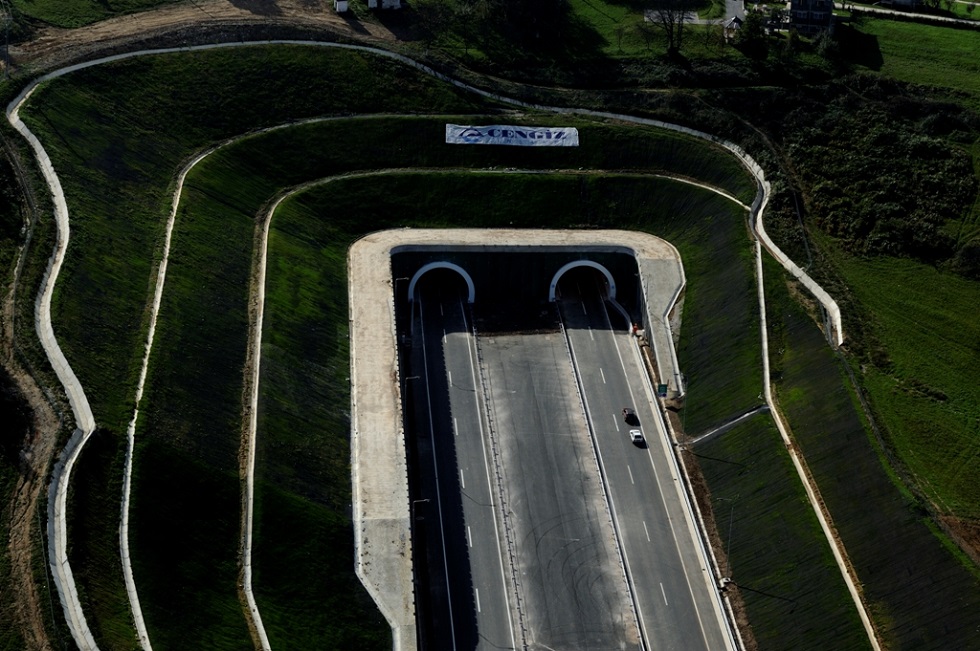
How much of the A1 has been completed? What areas are currently under construction?
About 90 km of the 334 km route have been completed so far. Those areas include an 81 km span between Drivuša and Tarčin and a 10 km span between Bijača and Čapljina.
There is 30 km of motorway under construction in the following regions: 11 km between Svilaj and Odžak and 9 km between D. Gračanica and Tarčin. The 10km between Čapljina and Počitelj, was recently contracted to China State Construction Engineering Corporation Limited and is scheduled for completion in 2021.
This means that there will be about 120 km of the 334 km route completed within the next couple of years.
Here is a video from JP Autoceste FBiH, which provides an overview of the route:
And a September 2019 video update on the section between Vranduk and Ponirak (near Zenica):
For more information and updates on the construction of the A1, check out the JP Autoceste FBiH website here.
To follow infrastructure developments and updates in Croatia and neighboring countries, follow our Travel and Lifestyle pages.


